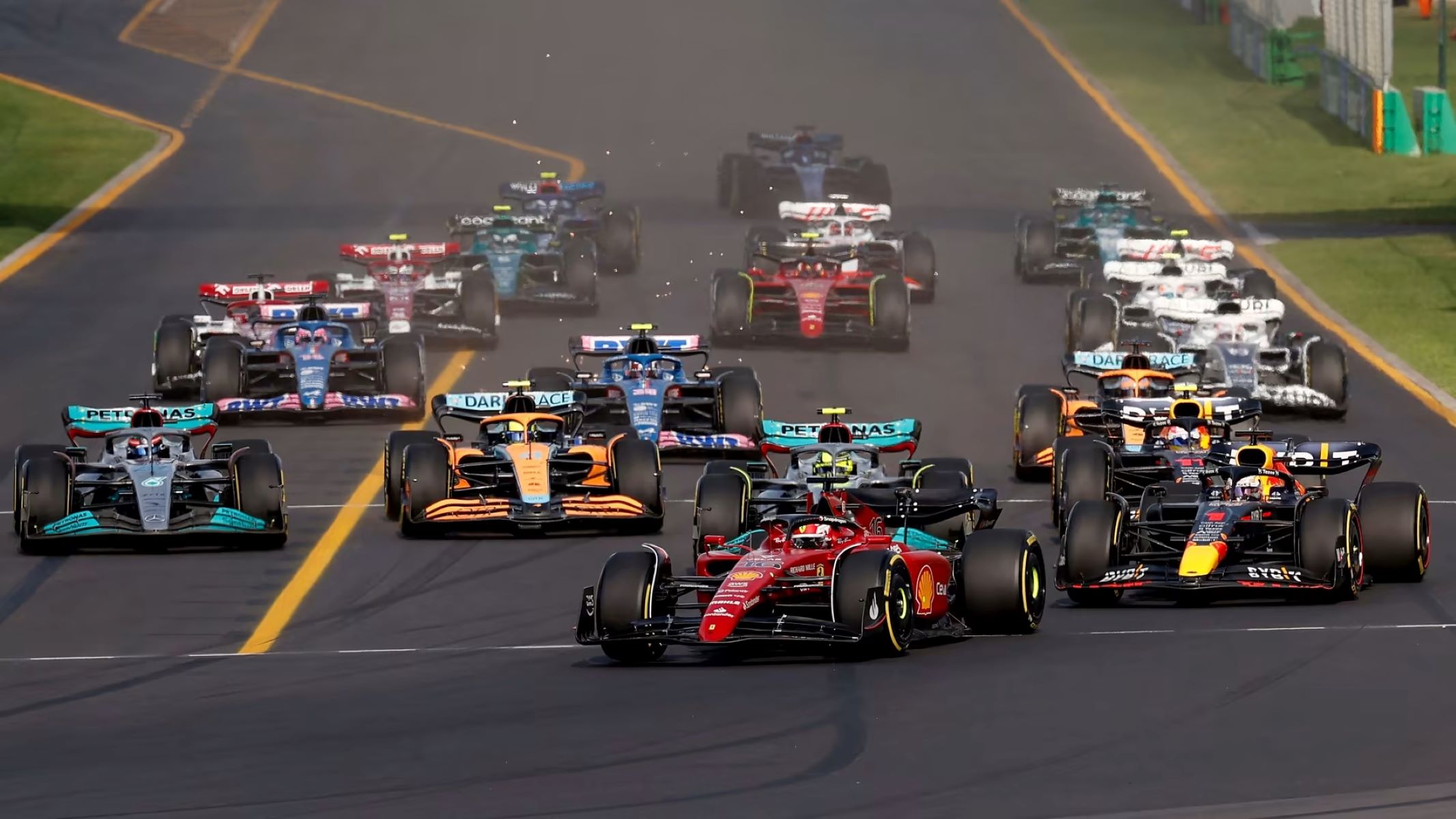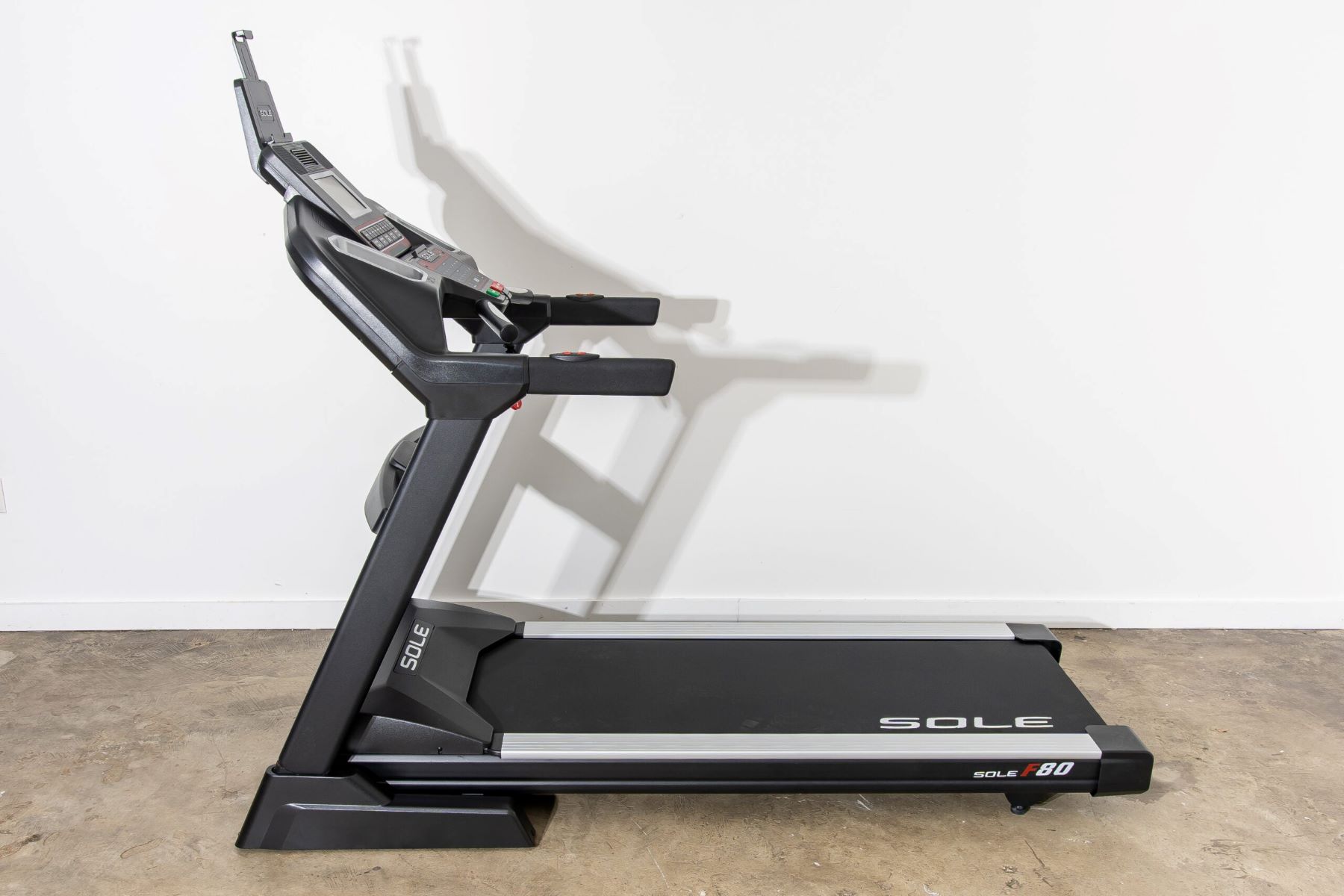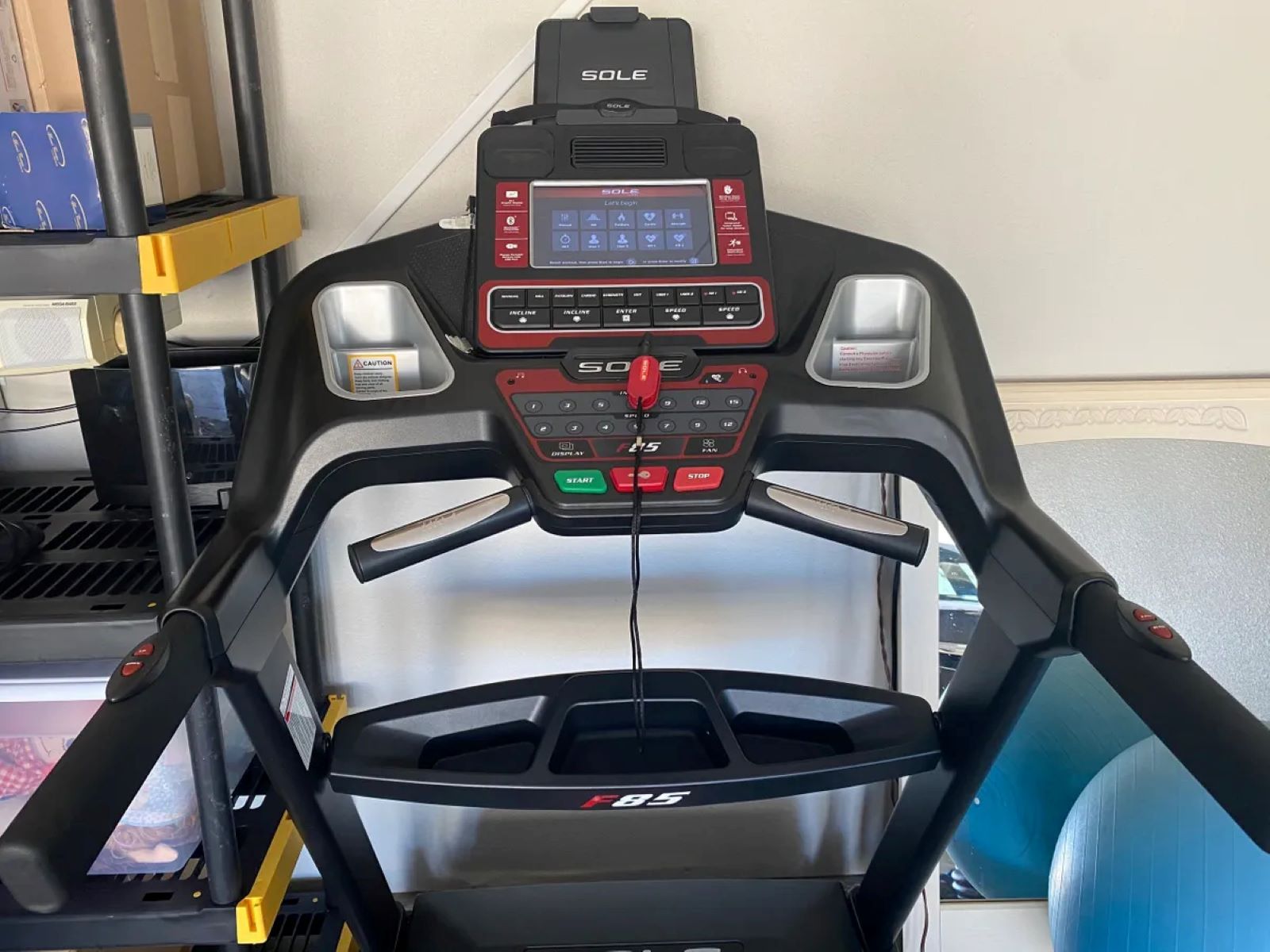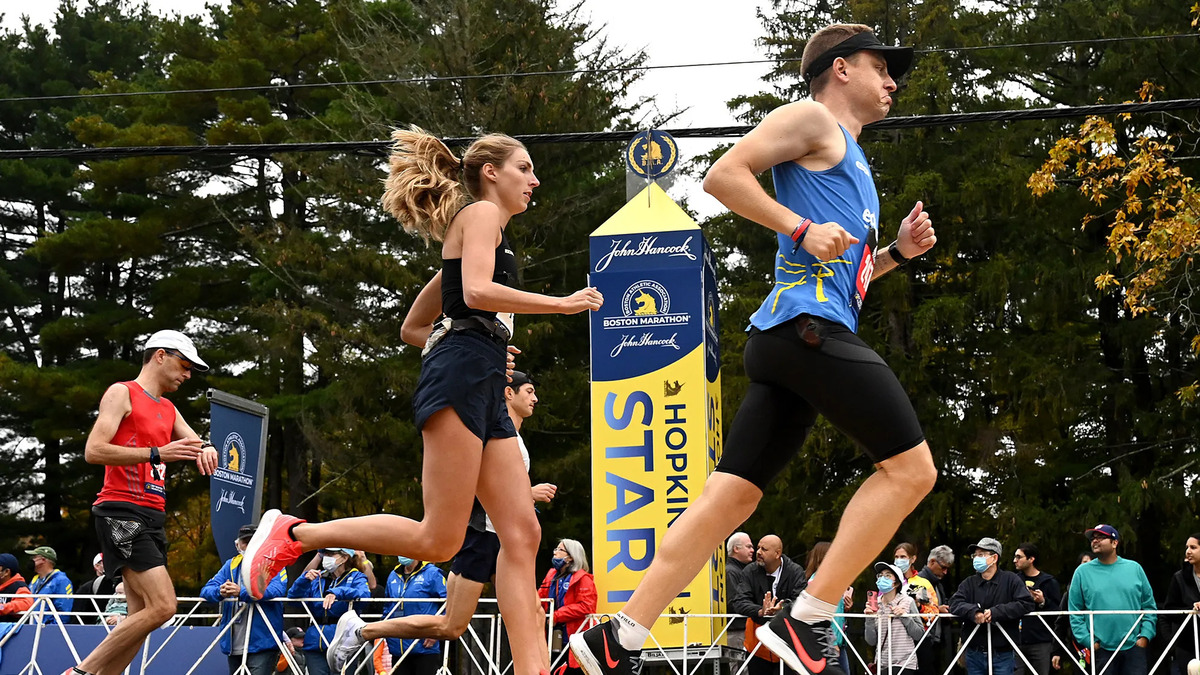

Featured
How Does Sprint Race Work In F1
Published: August 12, 2023
Discover how the featured Sprint Race enhances F1 events, providing an exciting twist to the traditional race format and keeping fans on the edge of their seats.
Introduction
The sprint race in Formula 1 is a thrilling addition to the race weekend, providing fans with even more action-packed moments. Introduced for the 2021 season, this new format has added an extra layer of excitement to the sport. The sprint race takes place on Saturdays and is designed to determine the starting grid for the main race on Sunday. In this article, we will delve into the details of how the sprint race works in Formula 1.
The sprint race is a shorter and faster-paced event compared to the traditional Sunday main race. It aims to condense the action and deliver intense wheel-to-wheel battles from start to finish. As a fan or a newcomer to the sport, understanding how the sprint race unfolds is crucial to fully enjoy the Formula 1 experience.
Throughout this article, we will explore the key aspects of the sprint race, including the qualifying process, the formation lap, race start, distance, and points system. By gaining a comprehensive understanding of these elements, you will be able to follow the strategies, tactics, and battles that unfold during the sprint race.
So, let’s buckle up and dive into the thrilling world of the Formula 1 sprint race!
Qualifying
Qualifying is the first step in the sprint race weekend. It determines the starting positions for the sprint race itself. The qualifying session takes place on Friday, one day before the sprint race. In this session, drivers push their cars to the limit in a series of flying laps to secure the best possible grid position.
The qualifying session consists of three parts: Q1, Q2, and Q3. In Q1, all drivers have a limited amount of time to set their fastest laps. The aim in this session is to avoid being one of the five slowest drivers as they will be eliminated and start from the back of the grid for the sprint race.
After the elimination in Q1, the remaining drivers move on to Q2. This session follows the same format as Q1 but with only 15 minutes on the clock. Again, the five slowest drivers are eliminated, determining their starting positions from 16th to 20th on the grid.
Finally, the top ten drivers from Q2 progress to the decisive Q3 session. Here, they have one last chance to set their fastest laps and secure their positions on the grid for the sprint race. The driver who sets the fastest lap in Q3 will start from pole position, while the rest of the drivers fill the grid based on their lap times.
The qualifying session is an opportunity for drivers to showcase their speed and skill on a single lap. It is a pressure-filled session where every fraction of a second can make a significant difference in starting position and set the tone for the sprint race.
After qualifying, the grid is set for the sprint race, with the fastest driver starting from pole position and the rest of the field lining up behind them in the order they qualified. The stage is now set for the sprint race, where drivers will battle wheel-to-wheel for supremacy.
Formation Lap
The formation lap is a crucial part of the sprint race. It serves as a warm-up lap for drivers to get their tires up to temperature and familiarize themselves with track conditions before the race officially begins. It also provides an opportunity for the cars’ systems to be checked one final time before the high-speed action commences.
Before the start of the sprint race, the cars line up on the grid in the same order they qualified during the qualifying session. Once the drivers are in their assigned positions, the race director signals the start of the formation lap by waving a green flag.
During the formation lap, the cars follow the lead of a safety car or a designated lead car. The safety car drives at a controlled pace, ensuring that the cars maintain a consistent distance from each other. This slow speed allows the drivers to warm up their tires and brakes, optimizing their performance for the start of the race.
As the cars navigate the track during the formation lap, the drivers also conduct system checks. They test the functionality of their car’s components, including the clutch, brakes, and gearbox, to ensure everything is in proper working order before the sprint race begins.
The formation lap is not just a technical warm-up; it also provides drivers with an opportunity to assess track conditions. They can observe any changes in grip levels, identify potential hazards, and mentally prepare for the race ahead. This information is crucial for making strategic decisions during the intense and fast-paced sprint race.
At the end of the formation lap, the lead car will enter the pit lane, usually leaving about two to three seconds before the rest of the field. As they approach the starting line, the anticipation builds, and the drivers prepare for the pivotal moment when the race will officially begin.
With the completion of the formation lap, the sprint race is about to kick off. The cars will form up on the grid once again, ready for the exhilarating battle that lies ahead.
Race Start
The race start is one of the most adrenaline-pumping moments in the sprint race. It marks the beginning of the intense competition as drivers jostle for position and dive into the first corner. A well-executed start can give a driver a significant advantage, while a poor start can drop them down the order.
As the cars line up on the grid after the completion of the formation lap, the tension builds. The lights above the track indicate the countdown to the race start. In recent years, this has been a five-light system, with each light illuminating one after the other, building anticipation and excitement among drivers and spectators alike.
When all lights go out, it signifies the start of the race. The drivers release the clutch, engage the throttle, and unleash their cars’ power as they sprint towards the first corner. The goal for each driver is to get a clean getaway without wheel spin or excessive wheelspin, and gain an advantage over their competitors.
The first corner of the sprint race is usually a focal point for intense battles and potential overtakes. It requires precise car control and strategic positioning to make the most of this early opportunity. Drivers will fight for the inside line, aiming to gain track position and defend against any overtaking attempts from rivals.
The start of the sprint race is a high-stakes moment, where split-second decisions can have a significant impact on the outcome. Drivers must balance aggression with caution, as the risk of collisions and incidents is heightened in the opening stages of the race.
While the race start is a thrilling spectacle, it’s essential to note that the sprint race is not won or lost at this moment alone. It sets the stage for the battles to come, and drivers must maintain their focus and composure throughout the race to maximize their chances of success.
As the dust settles from the race start, the sprint race officially begins. The drivers settle into their rhythm, strategize their moves, and push the limits of their cars and skills to claim victory in this high-octane event.
Sprint Race Distance
The sprint race distance in Formula 1 is a key factor that distinguishes it from the traditional main race on Sunday. The sprint race is shorter in length, providing a burst of intense action within a condensed timeframe. This format aims to deliver excitement and unpredictability while keeping fans on the edge of their seats.
The distance of the sprint race is set at approximately one-third of the total distance of the main race. For example, if the main race is scheduled to cover a distance of 300 kilometers, the sprint race would typically be around 100 kilometers in length. This shorter distance means that drivers have to be even more strategic in their approach, as there is less time to make up for any mistakes or setbacks.
The reduced duration of the sprint race requires drivers to be aggressive right from the start. With fewer laps to make progress, they need to push harder and take calculated risks to move up the field. The compressed nature of the race also means that pit stops and tire strategies play a crucial role in a driver’s overall performance.
The sprint race distance is designed to create intense battles and increase the chances of overtaking. The reduced laps mean that drivers have less time to settle into a comfortable pace, forcing them to make bold moves and capitalize on every opportunity that arises.
From a spectator’s perspective, the shorter sprint race distance adds to the excitement and keeps the action fast-paced. The condensed timeframe means that fans can witness the drama unfold in a shorter span of time, enhancing the overall viewing experience. It also allows for more dynamic and unpredictable races, as drivers have less time to recover or build a comfortable lead.
The sprint race distance brings a unique challenge for teams and drivers. It requires them to extract maximum performance from their cars, make smart strategy decisions, and display exceptional racecraft in a limited timeframe. The ability to adapt quickly and make the most of every opportunity is crucial to achieving success in the sprint race format.
As the sprint race reaches its final laps, the intensity ramps up, and the battle for positions becomes even more fierce. Drivers must manage their tires, fuel, and energy to make a final push for the best possible finish. The shorter distance ensures that every moment counts, making the sprint race a thrilling spectacle for both participants and spectators.
Sprint Race Points
The sprint race in Formula 1 not only provides exhilarating on-track action but also offers drivers an opportunity to earn valuable points towards the championship. Introduced for the 2021 season, the sprint race points system adds an extra element of competition and rewards strong performances in this unique format.
The points awarded for the sprint race are different from those given in the main race. In the sprint race, the top three finishers are awarded points, with the winner receiving the highest number of points. Typically, the points distribution for the sprint race is as follows:
- 1st Place: 3 points
- 2nd Place: 2 points
- 3rd Place: 1 point
These points may seem relatively small compared to the main race, but they can make a difference in the championship standings, especially when considering the competitive nature of Formula 1.
The inclusion of sprint race points creates an additional incentive for drivers to push harder and aim for a strong result. Every point earned in the sprint race can prove crucial in the overall championship battle or even determine the final outcome at the end of the season.
In addition to the points awarded in the sprint race, the main race on Sunday continues to offer traditional points, with a more substantial allocation for a wider range of finishing positions. The combination of points earned from both the sprint race and the main race contributes to a driver’s cumulative score for the weekend.
It’s important to note that while sprint race points add another layer of competitiveness, they do not directly impact the starting positions for the main race. Instead, the results of the sprint race determine the order in which drivers will begin the main race on Sunday. This adds a strategic aspect to the weekend as drivers try to optimize their performance in both races to maximize their championship prospects.
While some may debate the merit of sprint race points and their impact on the championship, there is no denying that they add an exciting dynamic to the Formula 1 weekend. They provide drivers with an additional opportunity to score points and showcase their skills in the thrilling sprint race format.
As the season progresses and teams refine their strategies, the sprint race points can become a significant factor in the fight for championships, making every race weekend more thrilling and unpredictable.
Conclusion
The sprint race in Formula 1 has brought a fresh and exciting dimension to race weekends. From the qualifying session to the intense battles on track, each element of the sprint race format adds to the spectacle and keeps fans engaged from start to finish.
Qualifying sets the stage for the sprint race, as drivers push their cars to the limit in pursuit of the fastest lap times. The formation lap allows drivers to warm up their tires and conduct necessary system checks before the race start. Speaking of which, the race start itself is a heart-stopping moment, as drivers fight for positions and dive into the first corner.
The sprint race, with its reduced distance, creates a sense of urgency and requires drivers to be even more aggressive and strategic. The points awarded in the sprint race contribute to the overall championship standings, making each point earned significant in the long run.
Overall, the sprint race format has injected a burst of excitement into the Formula 1 calendar. It brings shorter, faster-paced races to audiences, delivering intense wheel-to-wheel battles and increasing the unpredictability factor. This new format ensures that fans remain captivated throughout the race weekend, with more opportunities for overtakes and thrilling moments.
As fans, we can eagerly anticipate the next sprint race and witness the drivers showcase their skills and tactics in this dynamic format. From the roar of the engines to the strategic decision-making, the sprint race has undeniably become an integral part of the Formula 1 experience, keeping the sport at the forefront of motorsport entertainment.
So, prepare yourself for more thrilling sprint races, as Formula 1 continues to evolve, adapt, and provide fans with the ultimate showcase of speed, skill, and drama on the world’s most iconic circuits.








